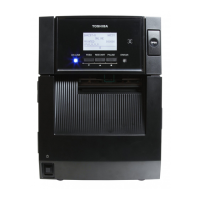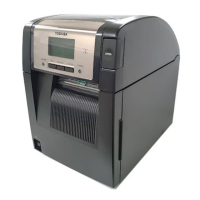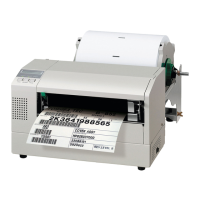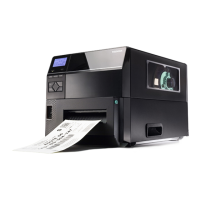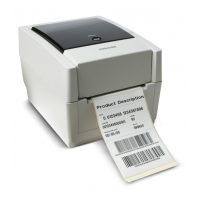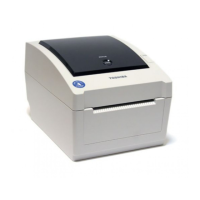
Do you have a question about the Toshiba BA410 and is the answer not in the manual?
| Brand | Toshiba |
|---|---|
| Model | BA410 |
| Category | Barcode Reader |
| Language | English |
Details the operation panel, including Graphic LCD, ONLINE LED, ERROR LED, FEED key, PAUSE key, and RESTART key.
Mode for adjustment by service persons/production staff, including self-diagnosis, test print, and settings.
Provides a visual overview of how to access different printer modes using key combinations during power on.
Details the function of each key ([FEED], [RESTART], [PAUSE]) in the Online Mode.
Explains the meaning and behavior of the ONLINE and ERROR LEDs.
Describes the operations for entering System Mode and its purpose for self-tests and parameter settings.
Describes how to reset the printer and the contents of the RESET menu.
Outlines the diagnostic menu, including maintenance counter, auto-diagnostic, head check, and BD address.
Describes the procedure for checking the print head status and detecting broken dots.
Details the process for adjusting reflective, transmissive sensors, and paper end level.
Clears maintenance counter data and resets initial values for various counters.
Clears parameter settings and resets them to initial values, starting an initial setup wizard.
Details LAN/WLAN settings such as type, IP address, subnet mask, DHCP, and security options.
Details RS-232C settings like Baud Rate, Data Length, Stop Bit, Parity, and Control.
Details Bluetooth settings including Bluetooth, Factory Test, Inquiry, Security, Scan Interval, Scan Window, Auto Connect, and SSP Auth.
Covers UHF settings including Power Level, Q Value, AGC Threshold, Write AGC, Retry Min AGC, Calib. Mode, and Encode Position.
Selects whether the RFID calibration function is enabled or not.
Sets the optimum data read/write position obtained through RFID calibration.
Performs tests on the LCD backlight, missing dots, character display, and contrast.
Tests the functionality of the FEED, RESTART, and PAUSE keys.
Selects the language for displaying LCD messages.
Details how to set a password for system mode access.
Describes entering User System Mode, its purpose for parameter settings, and key operations.
Describes the process for downloading firmware to the printer.
Describes the process of starting auto configuration mode by holding the FEED key.
Details the requirements for USB memory, including firmware and CFG files.
Explains the format and contents of the auto configuration file.
